10 Spring Lawn Care Tips for New Hampshire
BY ABDUL WADOOD | JUNE 5TH, 2023 | LAWN CARE, NEW HAMPSHIRESpring in New Hampshire is a treat. The snow melts, and the flowers start blooming again. But don’t stand around too long admiring the scenery. There are some things you need to do to get your own yard in shape. If you follow these spring lawn care tips for New Hampshire, you’ll get the most out of your grass all year long.
In this article:
- Rake
- Treat Lawn Diseases
- Dethatch, if Needed
- Remove Weeds
- Eliminate Pests
- Prep Your Lawn Equipment
- Mow
- Test Your Soil
- Fertilize, if Needed
- Clean Gutters
1. Rake
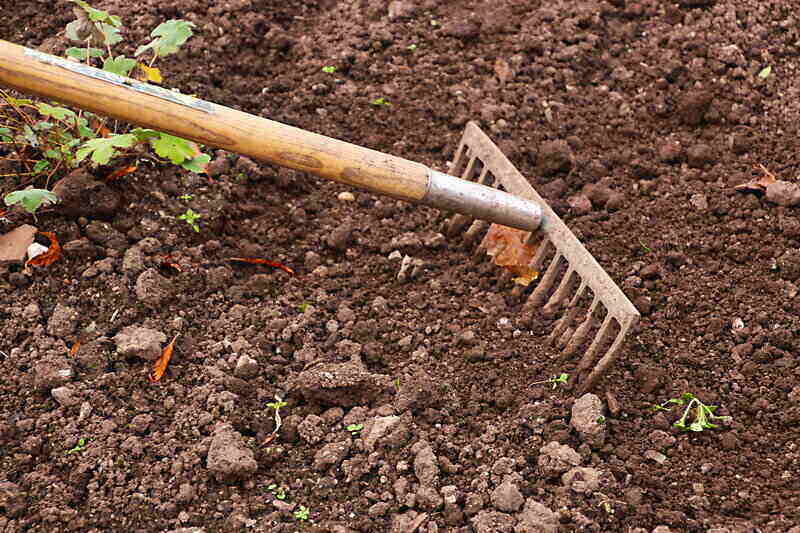
Photo Credit: PxFuel
As the temperature starts warming up in spring, your lawn will slowly wake up from its deep winter sleep. Grab your rake and remove debris, fallen branches, and dead plants to allow sunlight, water, and other nutrients to reach the soil.
Raking also splits grass blades and promotes straight grass growth. If the soil is wet, wait for it to dry to avoid pulling out healthy grass.
Thatch is a layer of living and dead organic plant matter that accumulates in your grass.
After your first rake, you can let thatch build up to half an inch, as it can actually be good for your lawn. Any more than that creates a barrier that blocks oxygen and moisture from reaching the roots. Excessive thatch also attracts pests and diseases.
2. Treat Lawn Diseases
New Hampshire has a humid summer climate. Fungi thrive in warm, humid weather and can attack your lawn any time during spring. Here are some tips to eliminate fungi at their source.
- Plant cool-season grasses as they best suit New Hampshire’s climate and are less prone to diseases.
- Avoid overwatering as it encourages fungi growth.
- Keep your grass mowed at the right height.
- Feed your lawn with proper nutrients.
- Set up an effective lawn drainage system.
Here are some common lawn diseases in New Hampshire.
- Snow mold
- Red thread
- Dollar spot
Snow Mold
What to look for:
- There are two types of snow mold: gray and pink snow mold. Gray snow mold appears as circular or irregular patches about 3 feet in diameter. It damages only the grass blades. Pink snow mold looks similar but with a pinkish tint. It’s more dangerous as it kills both grass blades and roots.
How to treat snow mold:
- Snow mold forms when snow covers an area for a lengthy period. To treat this disease, rake the mold first and then use fungicides with bacillus subtilis, azoxystrobin, or propiconazole.
Red Thread
What to look for:
- Red thread is a common lawn disease that appears as tan or pinkish-red circular patches. The patches can be between 2 inches and 2 feet in diameter.
How to treat red thread:
- Red thread occurs when your lawn lacks nitrogen. Proper lawn maintenance is the solution to this disease.
Dollar Spot
What to look for:
- Dollar spot appears as yellow-tan irregular circular patches about the size of a dollar coin. It often shows up in clusters, and a cottony white growth appears on the grass in the morning.
How to treat dollar spot:
- Fungicides with PCNB, propiconazole, myclobutanil, triadimefon, or thiophanate-methyl can help treat dollar spot. But you shouldn’t only rely on fungicides to get rid of dollar spot as it quickly develops resistance to them. A good lawn care routine is required to get rid of this disease entirely.
3. Dethatch, if Needed
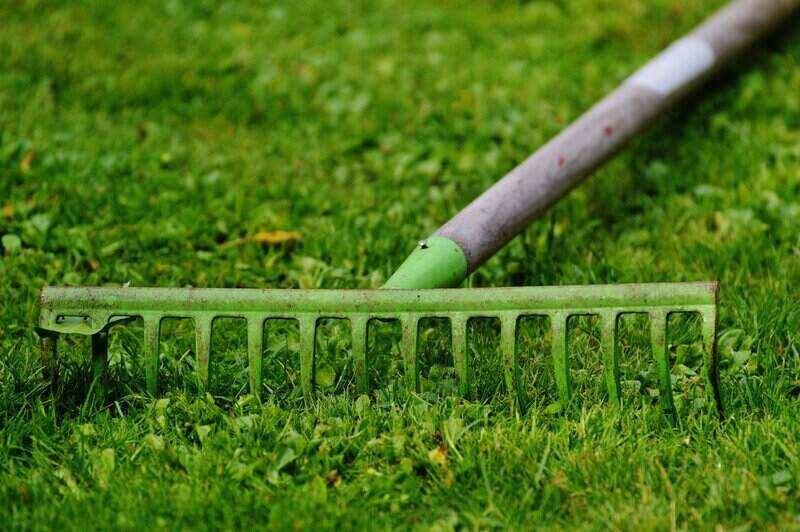
Photo Credit: RawPixel
If a lot of thatch has accumulated on your lawn, raking won’t help, and you probably have to dethatch with a dethatcher or vertimower.
You may dethatch your lawn once every five years if needed. Most New Hampshire lawns don’t require frequent dethatching.
The best time to dethatch your lawn is when it’s actively growing. It’s usually during early spring for cool-season grasses. Before running the dethatcher, ensure the soil is moist. If you notice any bare spots after dethatching, overseed to fill them.
4. Remove Weeds
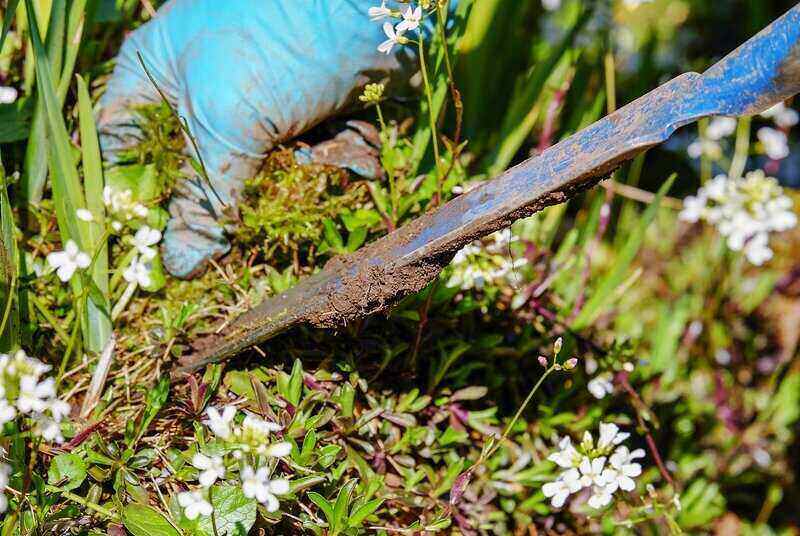
Photo Credit: Pixabay
Weeds can take over your lawn at any time of the year. Don’t worry! You can apply pre-emergent herbicides early in the spring to stop weeds from germinating. If weeds are already showing up, it can be too late to use pre-emergent herbicides. In this case, apply post-emergent herbicides.
Note: Pre-emergents may also prevent seeds from germinating. So, if you want to overseed your lawn, wait for at least four months.
If there are just a few weeds in your lawn, you can remove them manually.
5. Eliminate Pests
Pests are inevitable, and it’s impossible to stop them altogether. But with proper irrigation, fertilization, and dethatching, you can keep them under control.
Lawn pests usually reproduce during spring. Use pesticides before they get time to lay and fertilize eggs.
Here are some lawn pests common to New Hampshire.
- Chinch bugs
- Billbugs
- Sod webworms
- White grubs
You may also find wasps, centipedes, and spiders on your lawn. In this case, it’s best to seek expert help to eliminate them, as they harm humans.
Don’t use catch-all pesticides, as they are less effective and can harm beneficial insects, pets, and even kids. We recommend you identify the exact pest in your lawn and use a pesticide that targets it specifically.
6. Prep Your Lawn Equipment
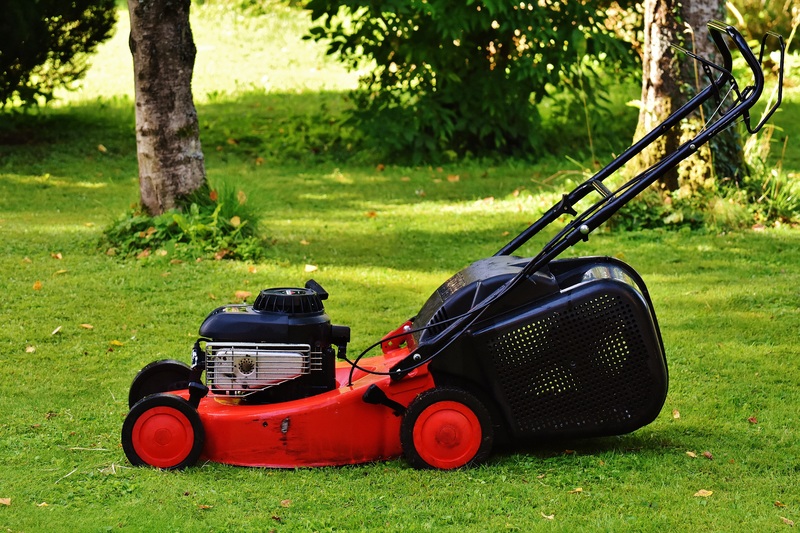
Photo Credit: PxHere
Spring has started, and it’s time to get your lawn equipment duty-ready.
- If you use gas-powered tools, stock up on gas, change the spark plug, and replace engine oil and oil filter.
- If you use electric tools, check the battery and replace it if necessary.
- If necessary, sharpen your lawn mower’s blade. (Below are the steps to do so)
- Make sure your weed eater has enough string.
- Sharpen your hedge trimmer’s blade if necessary.
Steps To Sharpen Lawn Mower Blades:
- Disconnect the power to prevent the lawn mower from accidentally starting.
- Drain the tank.
- Before removing the blade from the mower, mark it with a marker to know which side faces down.
- Remove the blade using a long-handled wrench.
- Clean the blade with a wet microfiber cloth. If the stain is too much, you may use WD-40.
- Place the blade in a vice and push the file in one direction following the blade’s angle.
- Repeat the same on the other side.
7. Mow
It’s spring! Turn on your lawn mower and mow your grass. Here’s the recommended mowing height for the popular grass types in New Hampshire.
| Grass type | Recommended height |
| Kentucky bluegrass | 2 – 3 inches |
| Fine fescue | 1.5 – 3 inches |
| Turf-type tall fescue | 2 – 4 inches |
| Perennial ryegrass | 2 – 3 inches |
Here are some tips for a perfect mow.
- Mow your grass when it’s dry. The best time to mow your lawn is early evening. Avoid mowing in the morning, as the grass will be wet because of moisture from dew.
- Never cut over one-third of your grass to prevent stressing the grass blades.
- Edge your lawn for a manicured appearance.
- Don’t allow clippings to build up too much, as they can block sunlight from reaching the grass.
8. Test Your Soil
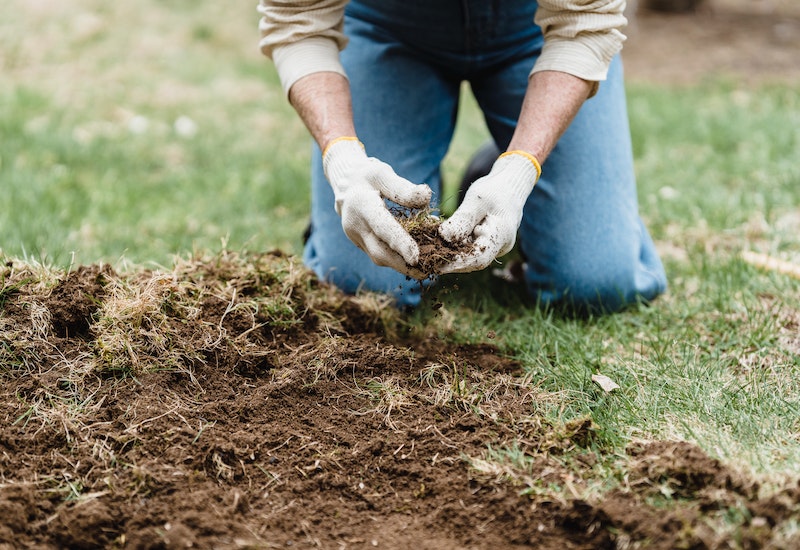
Photo Credit: Pexels
You can care for your lawn only if you know about the soil. So, it’s best to test your soil at least once a year. We also recommend you test your soil before fertilizing to choose the right fertilizer.
You can test the soil yourself with a DIY kit. However, we recommend you send your soil sample to your local soil testing laboratory for a complete analysis.
You can add calcium, magnesium, potassium, phosphorous, or other amendments to your soil if it lacks nutrients. If you want to fertilize your soil after adding amendments, wait at least a month to prevent them from negatively interacting with each other.
9. Fertilize, if Needed
Fall is the best time to fertilize cool-season grasses. However, you can fertilize in spring if you didn’t do so the previous fall.
Avoid fertilizing your grass regularly in spring, as it can increase the growth rate. When grass grows too fast, it doesn’t get sufficient nutrients and will become weak.
Analyze your soil test result and go for a fertilizer that contains the nutrients your grass needs. Also, apply the right amount of fertilizer. Over-fertilizing will kill your grass and cause runoff.
Note: Always go with slow-release fertilizers. Fast-release fertilizers will make your grass grow quicker but will damage it. In fact, they can even burn your grass.
10. Clean Gutters
New Hampshire is one of the snowiest states in the United States, and you probably wouldn’t even have touched your gutters after fall, so, there will most likely be lots of leaves in them.
Clogged gutters can spoil the appearance of your otherwise beautiful lawn. Not just that. They can cause water to overflow, damaging the foundation of your home. Water clogged in gutters can also leak through your ceiling or attic, damaging the interior.
When to Hire a Lawn Care Pro
New Hampshire is famously known for its long, cold, snowy winter. Spring lawn care is needed to recover your lawn from extreme cold and prepare it for the upcoming summer.
Raking debris, treating diseases, removing weeds, eliminating pests, mowing, and watering are all great ways to make your lawn look good again.
Don’t have the time for doing lawn chores? Wikilawn connects you to the best lawn care pros near you.
Main Photo By: Horticulturaldna / Wikimedia Commons / CC BY-SA 4.0